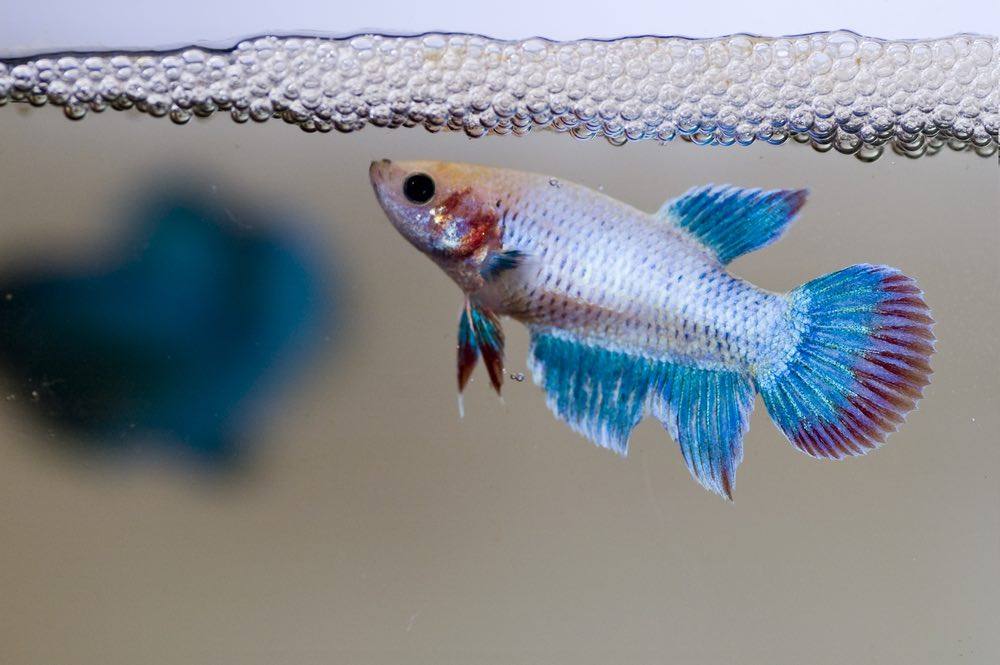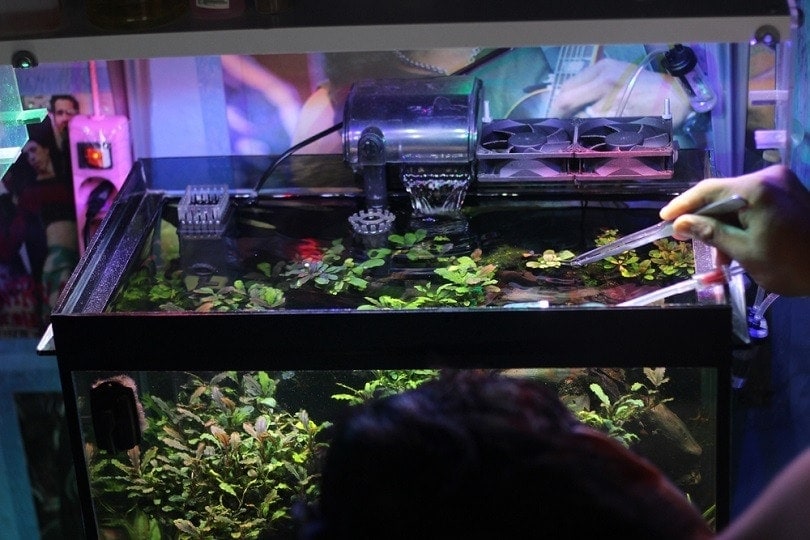Christmas Moss vs Java Moss: Key Differences (With Pictures)

Updated on
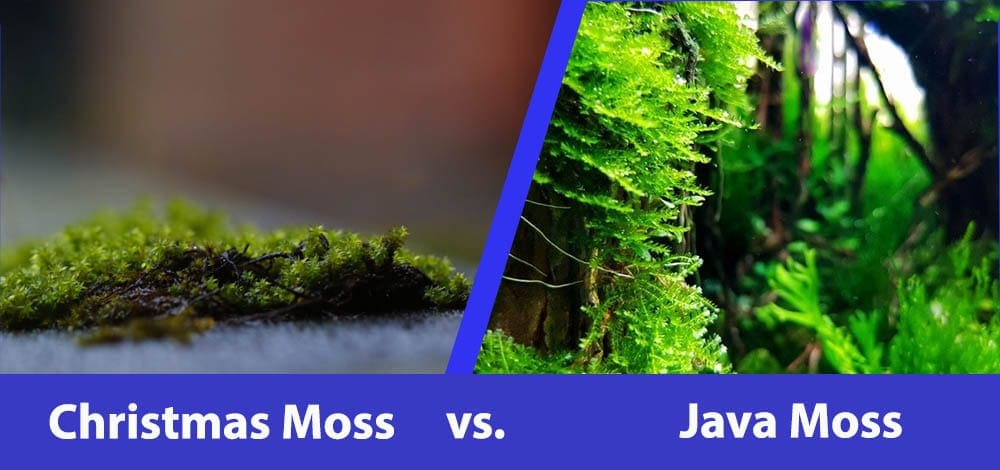
If you’re searching for the perfect moss for your aquarium, you’ve likely come across Christmas Moss and Java Moss. You may have wondered what the difference between these two mosses even is. After all, they are often misidentified and sold under each other’s names.
What you need to know about these two mosses is that they are different from each other and although they are somewhat similar in appearance, they can both bring a completely different look and feel to your aquarium. They both have delicate, intricate features that can be used to accentuate substrate, driftwood, rocks, and more. When it comes to these versatile mosses, there are no limits on how you can use them to enhance the appearance of your tank.
Visual Differences
At a Glance
- Average height: 2-4 inches (5-10 cm)
- Average width: 10-20 inches (25-51 cm)
- Lighting needs: Low to high
- Growth rate: Slow to moderate
- CO2: Optional
- Temperature: 70-90°F (21-32°C)
- Care level: Easy to moderate
- Average height: 4-10 inches (10-25 cm)
- Average width: 2-4 inches (5-10 cm)
- Lighting needs: Low to high
- Growth rate: Slow
- CO2: Optional
- Temperature: 59-90°F (15-32°C)
- Care level: Easy
 Christmas Moss Overview
Christmas Moss Overview
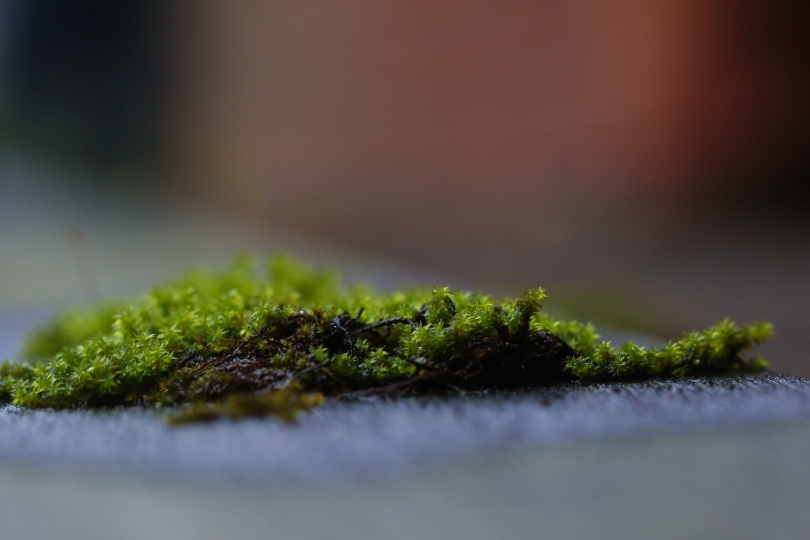
Christmas Moss is named for its branches that form a Christmas tree shape with offshoots that get shorter and shorter, coming to a point at the far end of the branch. This plant is a bold, dark green color and is popular in the aquatics world for its delicate, feathery appearance. Many people like this plant for shrimp and blackwater tanks due to its affinity for acidic, soft water.
Some people choose Christmas Moss because it provides excellent shelter to shrimplets and eggs left behind by egg scatterers. It can also provide shelter to newly hatched fry. The feathery branches and soft mats the plant creates will hold food, providing a food source to small invertebrates and bottom feeders.
Growth Habits
In low-light environments, Christmas Moss is likely to become tall and leggy. The more light it receives, the more compact the plant will stay. It tends to creep outward, forming large mats that can carpet substrate and tank décor. This carpeting is beloved by small invertebrates, like shrimp, because its compact, broad growth habit and feathery branches create the perfect environment for feeding and reproducing. While one Christmas Moss plant is capable of reaching widths of 10-20 inches, a carpet is usually comprised of multiple plants that propagate themselves to continue growing outward.
Ideal Environment
Christmas Moss can survive in temperatures from 70-90°F but it truly thrives in the 70-75°F range. Some people find great success with temperatures up to 82°F. If your Christmas Moss is not growing or doesn’t seem to be doing well, try lowering the tank temperature. Mosses tend to prefer cooler temperatures over warmer ones.
It can thrive with a pH from 5.0-7.5, making it a great carpet option for tanks with acid-loving plants and animals, like some varieties of shrimps and tetras. It will do well in blackwater tanks if they have adequate filtration. Christmas Moss grows best with some water flow, so consider planting it close to your filter outlet, sponge filter, or bubbler.
Suitable for:
Although relatively easy to grow, Christmas Moss can be a little finicky, so it’s not always the best moss option for beginners. It’s a great addition to tanks with small invertebrates or fish that will shelter in its branches. It’s also a good pick for anyone hoping to create carpeting anywhere in their tank. This plant can be grown on surfaces, like substrate or driftwood, or it can be allowed to float in the tank. It may float or settle and attach itself where it lands.
Java Moss Overview
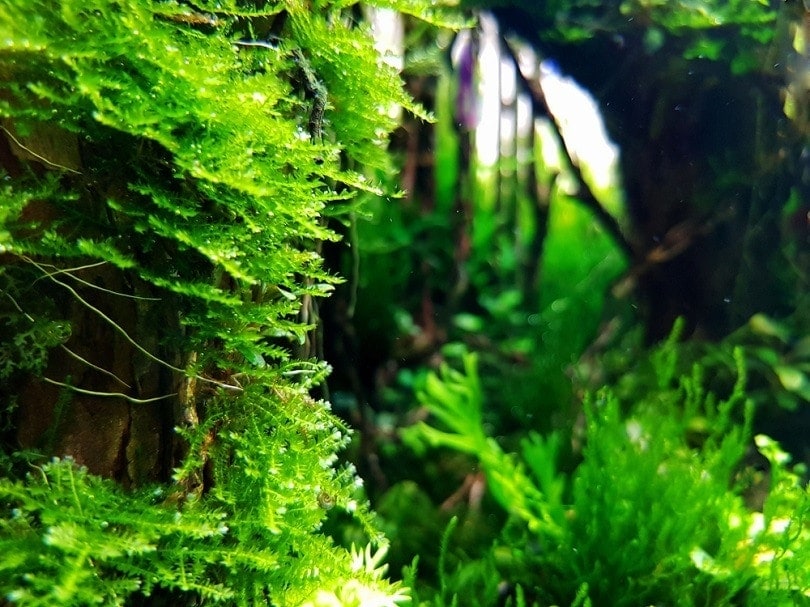
Java Moss and Christmas Moss are often confused for each other. However, Java Moss does not have the Christmas tree shaped stems and branches that define Christmas Moss. Java Moss features straight stems with equally sized, tiny leaves running the length of the stems. It has a less feathery appearance than Christmas Moss as well.
People who grow Java Moss appreciate how incredibly easy it is to grow. This moss is hardy and can withstand a broad range of water parameters. It is often overlooked by curious fish who may try to eat it. Many people who grow Java Moss claim that once you have Java Moss, you’ll never not have it. This is because of how easily it propagates and how little of the plant is required to form a new plant. It makes a great addition to tanks with small invertebrates, fry, and bottom feeders.
Growth Habits
While Java Moss can thrive in low-light environments, it will become leggy in low light. The amount of light it receives is a main determining factor in the color the plant becomes. It can range from dark to light green. Like Christmas Moss, it grows more compact the more light it receives.
A single plant will not grow much wider than 4 inches, but it will propagate itself over and over, forming a carpet in the tank. This moss is so prolific that it will often begin carpeting places it shouldn’t, like filter intakes. It can even grow as a terrestrial plant in the right environment. It’s one of the best options for growing a moss wall due to its carpeting habits.

Ideal Environment
Java Moss will tolerate a temperature range from 59-90°F and it will even continue growing at each end of the temperature extremes spectrum. However, it is happiest in the 70-75°F and growth issues can often be remedied by lowering the tank temperature. If you choose to grow your Java Moss as a terrestrial moss, it will need to be kept in a cool, high humidity environment, like in a terrarium.
It can thrive in a pH range from 5.0-8.0. This moss prefers soft, acidic water, but it can tolerate a GH up to 20°. It can be attached to surfaces or allowed to float. If floated, it will likely find a surface to grab onto and begin forming a carpet. This plant is wonderful for providing shelter and a food source for small invertebrates and fry. It can happily grow in just about any type of freshwater tank setup.
Suitable for:
Java Moss is suitable for just about any freshwater tank and is hardy enough to tolerate rapid changes in water parameters and poor water quality, although it will grow best with high water quality. This is easily one of the most beginner friendly plants you can choose for the home aquarium. Be prepared to be patient for its growth, though. This moss does grow and propagate slowly.
Which Moss is Right For You?
Java Moss and Christmas Moss are both beautiful additions to a freshwater tank. Christmas Moss does tend to be slightly less forgiving than Java Moss, making it less beginner friendly. Both mosses are appropriate for acidic tanks and can tolerate tanks from cool water to tropical. Java Moss does have the broader range of temperatures it can tolerate, making it the hardier choice. However, it also makes it the plant that will be more difficult to get rid of if you choose to.
If you are looking for a moss that can shelter your shrimplets or fry, or even provide a space for food to collect for your bottom feeders, then Christmas Moss or Java Moss can meet your needs. Both can be tall and leggy or compact, and both can be functional in your tank for breeding or food purposes. Java Moss is the more popular of the two, which often makes it easier to find for sale and less expensive.
Featured Image Credit: Left – Sepehr Eftekhari, Shutterstock; Right – IvanaStevanoski, Shutterstock

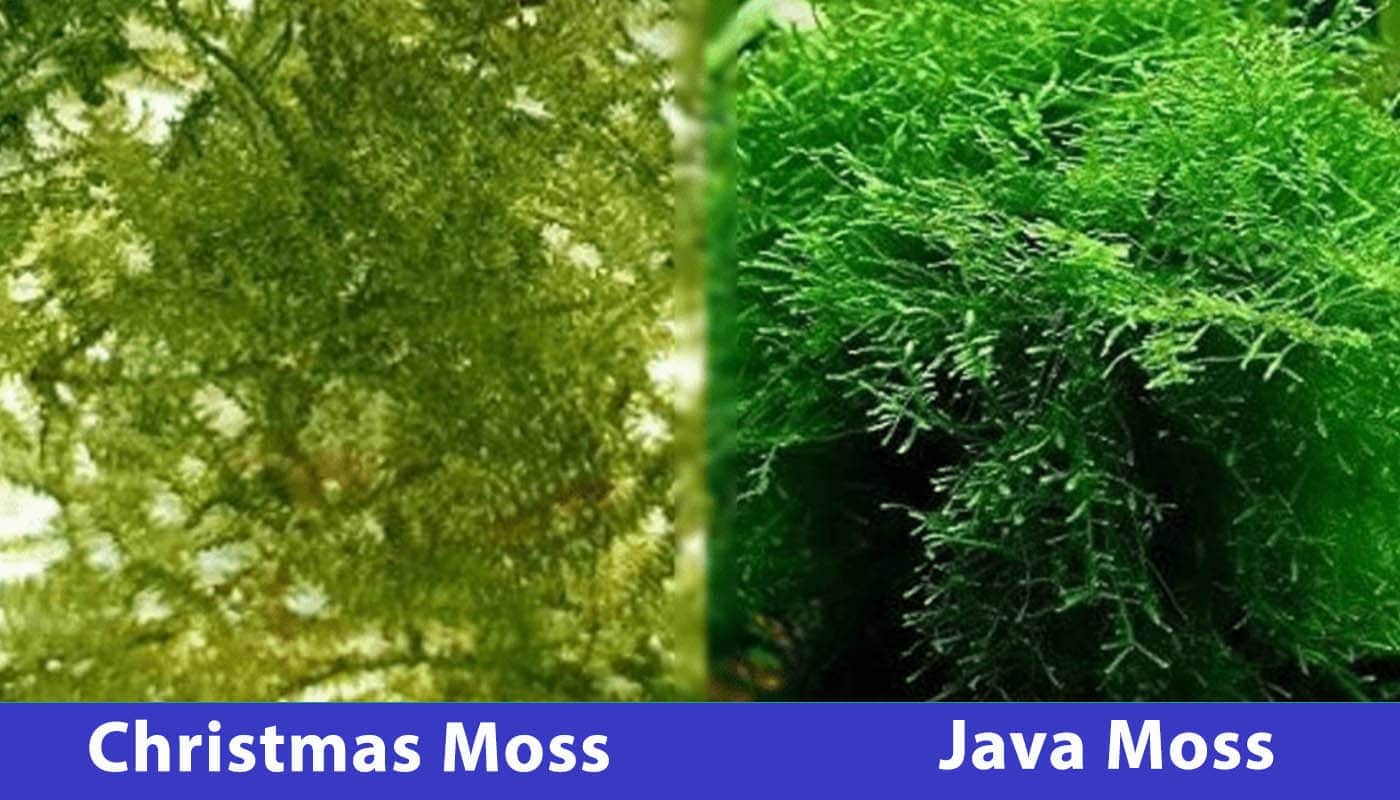
 Christmas Moss Overview
Christmas Moss Overview
